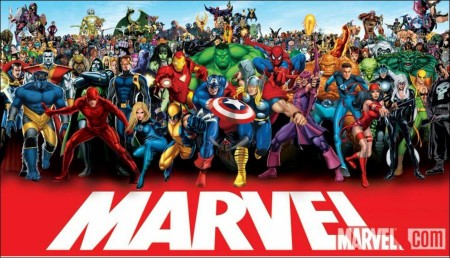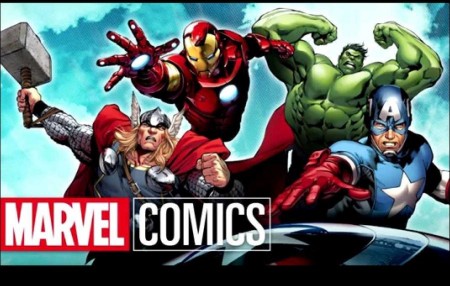Marvel Worldwide Inc., commonly referred to as Marvel Comics and formerly Marvel Publishing, Inc. and Marvel Comics Group, is an American publisher of comic books and related media. In 2009, The Walt Disney Company acquired Marvel Entertainment, Marvel Worldwide’s parent company.
Marvel started in 1939 as Timely Publications, and by the early 1950s had generally become known as Atlas Comics. Marvel’s modern incarnation dates from 1961, the year that the company launched The Fantastic Four and other superhero titles created by Stan Lee, Jack Kirby, Steve Ditko and many others.
Marvel counts among its characters such well-known superheroes as Spider-Man, Iron Man, Captain America, Wolverine, Thor, Hulk, Deadpool and Ant-Man, such teams as the Avengers, the Guardians of the Galaxy, the Fantastic Four, the Inhumans and the X-Men, and antagonists such as Doctor Doom, The Enchantress, Green Goblin, Ultron, Doctor Octopus, Thanos, Magneto and Loki.
Most of Marvel’s fictional characters operate in a single reality known as the Marvel Universe, with locations that mirror real-life cities. Characters such as Spider-Man, the Fantastic Four, the Avengers, Daredevil and Doctor Strange are based in New York City, whereas the X-Men have historically been based in Salem Center, New York and Hulk’s stories often have been set in the American Southwest.
From 60’s to Present
The first modern comic books under the Marvel Comics brand were the science-fiction anthology Journey into Mystery #69 and the teen-humor title Patsy Walker #95 (both cover dated June 1961), which each displayed an “MC” box on its cover. Then, in the wake of DC Comics’ success in reviving superheroes in the late 1950s and early 1960s, particularly with the Flash, Green Lantern, and other members of the team the Justice League of America, Marvel followed suit.
In 1961, writer-editor Stan Lee revolutionized superhero comics by introducing superheroes designed to appeal to more all-ages readers than the predominantly child audiences of the medium. Modern Marvel’s first superhero team, the titular stars of The Fantastic Four #1 (Nov. 1961),[27] broke convention with other comic book archetypes of the time by squabbling, holding grudges both deep and petty, and eschewing anonymity or secret identities in favor of celebrity status.
Subsequently, Marvel comics developed a reputation for focusing on characterization and adult issues to a greater extent than most superhero comics before them, a quality which the new generation of older readers appreciated.[28] This applied to The Amazing Spider-Man title in particular, which turned out to be Marvel’s most successful book. Its young hero suffered from self-doubt and mundane problems like any other teenager, something with which readers could identify.
Lee and freelance artist and eventual co-plotter Jack Kirby’s Fantastic Four originated in a Cold War culture that led their creators to revise the superhero conventions of previous eras to better reflect the psychological spirit of their age. Eschewing such comic-book tropes as secret identities and even costumes at first, having a monster as one of the heroes, and having its characters bicker and complain in what was later called a “superheroes in the real world” approach, the series represented a change that proved to be a great success.
Marvel often presented flawed superheroes, freaks, and misfits—unlike the perfect, handsome, athletic heroes found in previous traditional comic books. Some Marvel heroes looked like villains and monsters such as the Hulk and the Thing. This naturalistic approach even extended into topical politics.
Visits: 161




